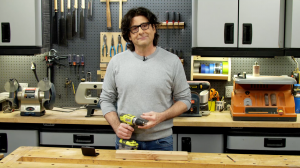Save Money by Insulating Water Pipes Yourself
Simple Ways to Insulate Water Pipes
Insulating both hot and cold water pipes are fairly simple with products marketed today, and there are several very good reasons to protect them. Insulation stops cold water pipes from sweating when moisture in the air condenses on their cold surfaces and drips in problem areas. It prevents hot water from losing its heat as it flows through the pipes from the hot water heater to the upstairs bathrooms and laundry areas. Lastly, insulation ensures that pipes running through unheated crawl spaces do not freeze and burst in winter's chill. In the steps below, this tooltip presents several of the available options among insulating products. All are available at your home improvement store.
- Use pre-slit polyethylene insulation that is both inexpensive and easy to install. Lay it over the pipe, and peel back the protective covering at the slit. Align the edges and press the self-sealing adhesive strips together. The process is about as difficult as putting a hot dog into its bun.
- Provide a higher insulation value--down to -297 degrees Fahrenheit--by using flexible elastomeric insulation. Its application on air conditioning and cold water pipes is of particular value. The product features the same type of self-sealing adhesive. Some products also have an antimicrobial compound that protects against mold. Most tubular insulation products offer easy installation because you can cut the ends and butt them together to make a mitered corner on a variety of pipe configurations.
- Consider using fiberglass insulation jackets wrapped in a vapor barrier when you are protecting straight piping runs. These products are rigid and do not bend easily. They also have peel-off strips that reveal adhesive edges to seal the jackets. Additionally, their exterior surfaces can be painted with latex paint to dress up exposed pipes running through a finished basement or garage, etc.
- Choose reinforced foam insulating tape to insulate the pipe with several tightly-spaced bends. Overlap its spirals slightly as you wrap it around the pipe. It will conform to almost any shape. The adhesive on the back will hold it secure as you squeeze it to make it conform to the bends.
Blog Articles
Expert Tips: How to Mount a TV on the Wall
Get step-by-step instructions on how to mount a TV on the wall, especially for big screen TVs. Master the art of wall mounting with our tips.
Frustrated by Stripped Screws? Here’s How to Get Them Out Fast
We've all been there. You're in the middle of a project, and suddenly your screwdriver spins uselessly in the screw head. The screw is stripped, and frustration sets in. With a little know-how and this simple trick, you can tackle a stripped screw and get your project back on track.
The Secret to Finishing Plywood Edges
Plywood projects are fantastic, but exposed edges can be an eyesore. This blog post unveils the magic of edge banding - a simple technique to create flawless, finished edges on your plywood projects, making them look professional and ready for paint or stain. Watch the video to learn how to apply edge banding like a pro!





